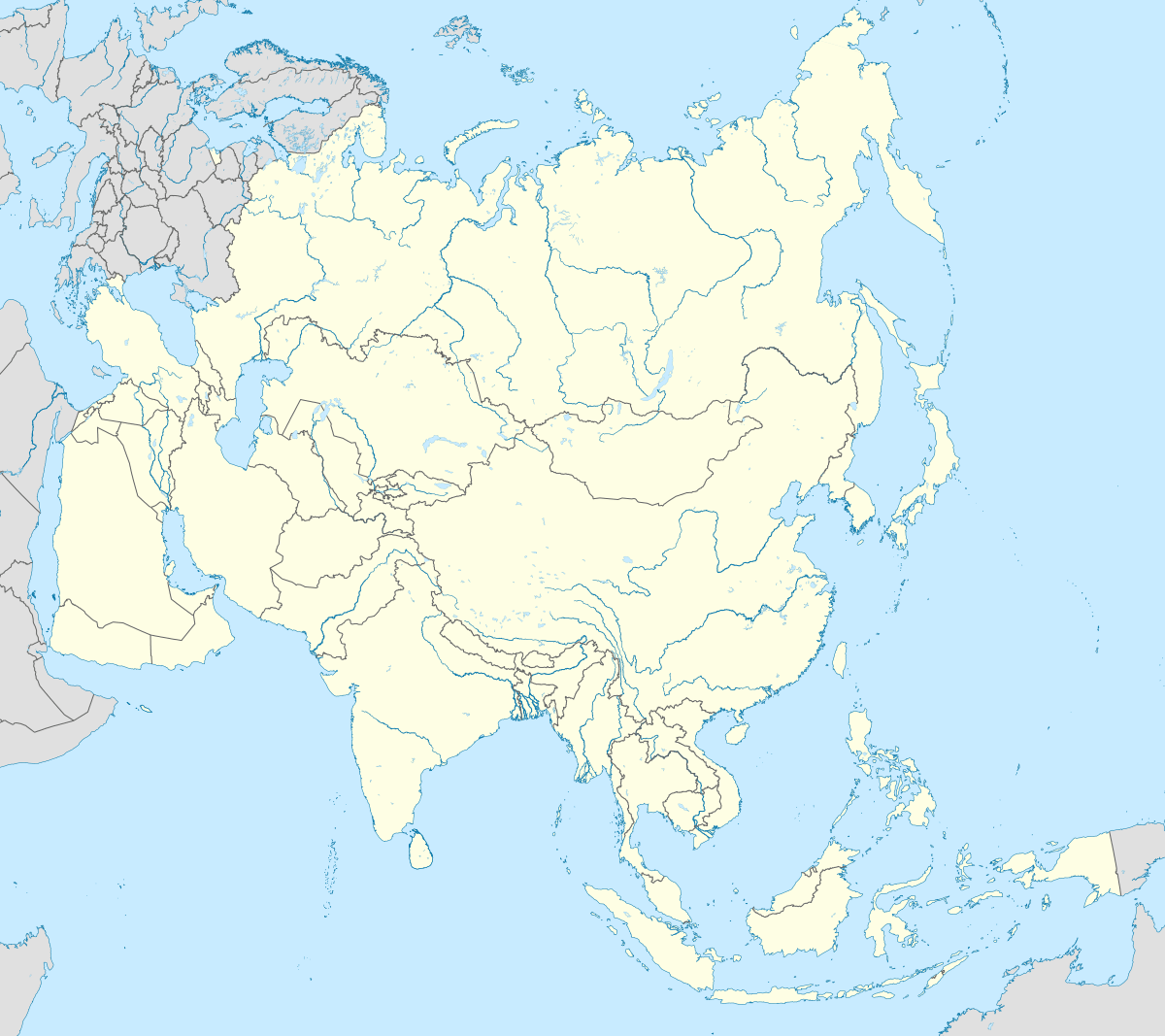Bijnor
Bijnor is a city and a municipal board in Bijnor district in the state of Uttar Pradesh, India. To boost its development, there is demand for the inclusion of Bijnor in the Delhi NCR.[2]
Bijnor | |
|---|---|
City | |
 Bijnor Location in Uttar Pradesh  Bijnor Bijnor (India)  Bijnor Bijnor (Asia) | |
| Coordinates: 29.37°N 78.13°E | |
| Country | |
| State | Uttar Pradesh |
| District | Bijnor |
| Government | |
| • MLA | Suchi (BJP) |
| Elevation | 225 m (738 ft) |
| Population (2011) | |
| • Total | 115,381 |
| Language | |
| • Official | Hindi[1] |
| • Additional official | Urdu[1] |
| Time zone | UTC+5:30 (IST) |
| Vehicle registration | UP-20 |
| Website | www |
History
Indus Valley Civilization
Alamgirpur, also called "Parasaram ka khera", is an archaeological site of the Indus Valley Civilization that thrived along Yamuna River (c. 3300–1300 BC) from the Harappan-Bara period, located in Meerut district, Uttar Pradesh, India.[3][4] It is the easternmost site of the civilization. It was partially excavated in 1958 and 1959 by Archaeological Survey of India, that found four cultural periods with intervening breaks; the earliest of them represented by a thickness of 6 feet, belonged to Harappan Culture. Although kiln burnt bricks were in evidence, no structure of this period was found, probably due to the limited nature of the excavations. Brick sizes were, 11.25 to 11.75 in. in length,5.25 to 6.25 in. in breadth and 2.5 to 2.75 in. in thickness; larger bricks averaged 14 in. x 8 in.x 4 in. which were used in furnace only.[4] Typical Harappan pottery was found and the complex itself appeared to be a pottery workshop. Ceramic items found included roof tiles, dishes, cups, vases, cubical dice, beads, terracotta cakes, carts and figurines of a humped bull and a snake.[4] There were also beads and possibly ear studs made of steatite paste, faience, glass, carnelian, quartz, agate and black jasper. Little metal was in evidence. However, a broken blade made of copper was found.[5]
Medieval history
During the time of Akbar, Bijnor was part of his Mughal Empire. During the early 18th century, the Rohilla Pashtuns established their independence in the area called by the Rohilkhand. Around 1748, the Rohilla chief Ali Mohammed Khan made his first annexations in Bijnor, the rest of which soon fell under the Rohilla domination. The northern districts were granted by Ali Mohammed Khan to Khurshid Ahmed Baig, who gradually extended his influence west of the Ganges and at Delhi, receiving the title of Najib-ud-daula with the position of the paymaster of the Mughal forces. Marathas invaded Bijnor who was also instigated by enemies of Rohillas, leading to several battles. Rohilla chief, Najib, who sided with Ahmad Shah Abdali in Panipat, was made vizier of the empire.[6]
Colonial era
In 1772 the Nawab of Oudh made a treaty with the Rohillas, to expel the Marathas in return for a money payment. Nawab of Oudh carried out his part of the bargain, but the Rohilla chieftains refused to pay. In 1774 the Nawab concluded with the East India Company government of Calcutta a treaty of alliance, and he then called upon the British, in accordance with its terms, to supply a brigade to assist him in enforcing his claims against the Rohillas. This was done; in the Rohilla War, the Rohillas were driven beyond the Ganges to the east, and Bijnor was incorporated in the territories of the nawab, who in the same year (1774) ceded it to the British East India Company. During the rebellion of 1857 Bijnor was occupied by the nawab of Najibabad, a grandson of Zabita Khan, on 1 June. In spite of fighting between the Hindus and the Muslim Pashtuns, the Nawab succeeded in maintaining his position until 21 April 1858, when he was defeated by the British at Nagina.
Demographics
As per 2011 census, Bijnor urban agglomeration had a population of 115,381 out of which males were 60,656 and females were 54,725. The effective literacy rate (7+ population) was 77.90 per cent.[7]
Education
Schools in Bijnor, whether using English or Hindi as a medium of instruction, are affiliated to one of the four bodies, Central Board of Secondary Education (C.B.S.E.), Council for the Indian School Certificate Examinations (C.I.S.C.E),and Uttar Pradesh Madhyamik Shiksha Parishad (U.P. Board).
In popular culture
- The Hindi TV show, Yahan Ke Hum Sikandar was set in Bijnor.
See also
- List of cities in Uttar Pradesh
- Dehra, Uttar Pradesh
- Bijnor railway station
- Bijnor (Assembly constituency)
- Bijnor (Lok Sabha constituency)
- 1990 Bijnor riot
References
- "52nd REPORT OF THE COMMISSIONER FOR LINGUISTIC MINORITIES IN INDIA" (PDF). nclm.nic.in. Ministry of Minority Affairs. Archived from the original (PDF) on 25 May 2017. Retrieved 21 December 2018.
- UP seeks to include 6 districts in NCR, Indian Express.
- Ghosh, Amalananda (1991). An Encyclopedia of Indian Archaeology. Brill Academic Publishers. ISBN 978-9-00409-264-8.
- Amalananda Ghosh (ed.). "Excavations at Alamgirpur". Indian Archaeology, A Review (1958-1959). Delhi: Archaeological Survey of India. pp. 51–52.
- Singh, Upinder (2008). A history of ancient and early medieval India: from the Stone Age to the 12th century. New Delhi: Pearson Education. p. 214. ISBN 9788131711200.
-

- "Urban Agglomerations/Cities having population 1 lakh and above" (PDF). Provisional Population Totals, Census of India 2011. Retrieved 7 July 2012.